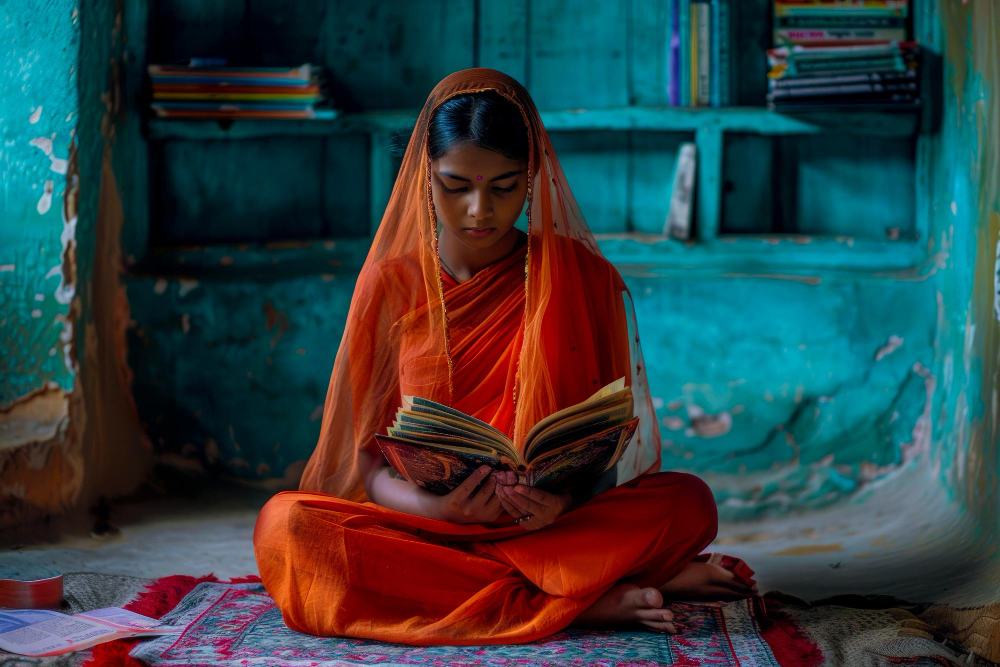Photography is more than just pointing a camera and pressing a button. It’s an art form that immortalizes emotions, creating a story within a single frame. At Clicks by Ali, we believe that the true essence of photography lies in capturing feelings that resonate for a lifetime, rather than just documenting events. Let’s delve into the enchanting world of photography and explore how emotions take center stage behind the lens.
Table of Contents
Why Emotions Matter in Photography
Connecting the Viewer to the Subject
Photographs with genuine emotions make the viewer feel connected to the subject. A smile, a tear, or a subtle glance can speak volumes, creating an unspoken dialogue. This connection often makes an image unforgettable, as it resonates deeply with viewers and evokes empathy.
Creating Timeless Memories
While trends and poses may fade, the emotions captured in a photo remain timeless. A candid laugh or a heartfelt hug preserves moments as they were genuinely experienced. These raw, emotional snapshots become family treasures, passed down through generations, telling stories without words.
Telling a Story Without Words
Every emotion captured in a photograph narrates a story. Whether it’s the joy of a wedding, the anticipation of new life, or the nostalgia of a family reunion, the emotions bring the story to life. A photograph can transcend language and cultural barriers, communicating universal feelings like love, joy, and sorrow.
Techniques to Capture Authentic Emotions
Capturing emotions requires more than technical skills. It’s about creating the right environment, understanding the subject, and being present in the moment. Here are some techniques to achieve this:
1. Create a Comfortable Environment
- Why: People’s true emotions shine when they feel at ease.
- How:
- Start with casual conversations to break the ice.
- Play soft background music to set a relaxing tone.
- Encourage natural movement rather than rigid poses, letting subjects feel free and uninhibited.
2. Observe and Anticipate
- Why: Genuine emotions often happen in fleeting moments.
- How:
- Pay attention to body language and facial expressions to predict emotional peaks.
- Anticipate reactions during significant moments, like exchanging vows or surprise proposals.
- Practice patience and remain discreet to avoid disrupting organic moments.
3. Use the Right Equipment
- Why: Good equipment ensures clarity and detail, enhancing emotional impact.
- How:
- Use prime lenses for shallow depth of field to focus on the subject.
- Opt for a fast shutter speed to freeze spontaneous actions.
- Equip yourself with versatile tools to adapt to different lighting and settings.
| Equipment | Purpose |
|---|---|
| Prime Lenses | Isolate the subject and enhance focus. |
| Wide-Angle Lenses | Capture the environment with context. |
| Telephoto Lenses | Shoot from a distance without disrupting the scene. |
4. Encourage Natural Interactions
- Why: Staged emotions often feel artificial.
- How:
- Prompt couples to talk about their happiest moments.
- Ask families to share inside jokes or recall cherished memories.
- Let children play naturally, capturing their unfiltered joy and curiosity.
5. Be Patient and Ready
- Why: Emotional moments can’t be rushed or forced.
- How:
- Wait for the right moment rather than over-directing.
- Keep your camera ready to capture spontaneous emotions as they unfold.
- Develop a keen sense of timing to anticipate when emotions peak.
The Role of Lighting in Emotional Photography
Lighting can dramatically enhance or diminish the emotional impact of a photograph. Here are some lighting techniques to amplify emotions:
1. Natural Light
- Best for: Capturing warmth and authenticity.
- Tips:
- Use golden hour lighting for romantic or dreamy effects.
- Position subjects near windows for soft, diffused light.
- Avoid harsh midday sunlight unless intentionally using shadows for drama.
2. Low-Key Lighting
- Best for: Adding drama and intensity.
- Tips:
- Use a single light source to create deep shadows and highlights.
- Position the light to emphasize facial expressions or hands.
- Adjust contrast to enhance the mood of the scene.
3. Backlighting
- Best for: Creating silhouettes and adding depth.
- Tips:
- Place the light source behind the subject for striking outlines.
- Balance exposure to ensure the background doesn’t overpower the subject.
- Experiment with colored backlighting for artistic effects.
| Lighting Style | Emotion Amplified | Example |
| Natural Light | Warmth, Intimacy | Outdoor portraits |
| Low-Key | Drama, Mystery | Emotional close-ups |
| Backlighting | Dreaminess | Sunset couple shots |
The Importance of Post-Processing in Emotional Photography
While capturing emotions is vital, post-processing can further enhance the emotional depth of an image.
1. Adjusting Colors and Tones
- Warm tones evoke comfort and happiness.
- Cool tones emphasize serenity or melancholy.
- Experiment with color grading to match the emotional tone of the image.
2. Highlighting Key Elements
- Use vignettes to draw attention to the subject.
- Enhance sharpness around facial features like eyes and lips to emphasize expressions.
3. Removing Distractions
- Clean up backgrounds to keep the focus on the subject.
- Use cropping to eliminate unnecessary elements that detract from the story.
4. Adding Artistic Filters
- Sepia for nostalgia.
- Black-and-white for timeless elegance.
- Experiment with overlays to create a vintage or cinematic look.
Real-Life Case Studies: Memorable Photoshoots
At Clicks by Ali, we’ve captured countless heartfelt moments that tell unique stories. Here are a few highlights:
1. A Bride’s Emotional Farewell
During a wedding, the bride’s farewell to her family brought tears to everyone’s eyes. Capturing her father’s tearful hug became a defining moment of the day, showcasing love, joy, and sadness in a single frame. The use of natural lighting and a wide-angle lens emphasized the intimacy of the moment.
2. A Child’s First Steps
Photographing a toddler’s first steps was an emotional and challenging experience. By creating a playful environment, we captured the child’s curiosity and the parents’ elation in a series of candid shots. The use of a fast shutter speed preserved these fleeting moments.
3. Corporate Excellence
A corporate headshot session turned into a story of personal triumph when we captured a CEO’s confident yet humble demeanor. The lighting and framing emphasized his journey from humble beginnings to success, creating an image that resonated with his professional narrative.
4. Capturing Cultural Heritage
In a series focused on traditional events, we documented a family celebrating their cultural festival. The vibrant colors, intricate outfits, and emotional bonds highlighted the significance of the occasion. This required careful planning to blend cultural sensitivity with technical expertise.
Emotions Across Different Genres of Photography
1. Wedding Photography
Weddings are a treasure trove of emotions, from the couple’s joy to the parents’ pride. Capturing candid moments, such as the bride’s laughter or the groom’s tearful vows, creates a rich emotional tapestry. Group shots often reveal heartfelt connections between family members.
2. Family Portraits
Family portraits often highlight bonds and dynamics. Encouraging playful interactions, like siblings laughing or parents hugging their children, results in genuine, heartwarming photos. Including pets can also add an element of unfiltered affection.
3. Street Photography
Street photography captures raw, unfiltered emotions. A street musician lost in their performance or a vendor’s warm smile can tell powerful stories about daily life. Observing and blending into the environment ensures authenticity in every shot.
Psychology of Emotional Photography
Understanding psychology helps photographers connect with subjects:
- Empathy: Understanding the subject’s feelings creates more relatable photos.
- Body Language: Reading non-verbal cues helps anticipate genuine moments.
- Trust Building: A trusting relationship between the photographer and subject fosters authenticity.
- Contextual Cues: Incorporate meaningful props or environments to evoke emotions naturally.
Tips for Aspiring Photographers
1. Learn to Observe
Spend time observing human interactions to recognize subtle emotions. Notice details like a fleeting glance or a shy smile.
2. Practice Patience
Emotional moments aren’t predictable. Wait for the perfect frame by observing quietly without interrupting the flow of events.
3. Invest in Education
Take workshops or study from seasoned photographers to refine your skills. Learn about the latest trends and techniques in emotional photography.
4. Build Rapport
Engage with your subjects to make them comfortable and expressive. A relaxed subject is more likely to display genuine emotions.
5. Experiment with New Styles
Try combining traditional and modern styles to create unique compositions. This not only adds variety to your portfolio but also sharpens your creativity.
Expanding Client Perspectives
1. Testimonials That Inspire
Clients often share how emotional photos changed their lives:
- “The photo of my dad walking me down the aisle is my treasure. Thank you!”
- “You captured my mother’s smile perfectly. It’s now our family’s legacy.”
2. Personalized Sessions
Every client’s story is unique. Tailoring sessions ensures that the captured emotions reflect their individuality. This approach builds trust and ensures satisfaction.
3. Behind the Scenes
Show clients the effort and creativity that go into their sessions. Sharing behind-the-scenes footage or images can deepen their appreciation for the art of photography.
Conclusion: Photography as an Emotional Journey
At Clicks by Ali, we believe that every photo should do more than just document. It should evoke feelings, spark memories, and tell a story that words often cannot. By focusing on emotions rather than just moments, we create images that clients cherish for generations. Whether it’s the joy of a wedding, the innocence of childhood, or the bonds of family, the magic lies in capturing the essence of life itself.
Let your journey into emotional photography begin with a single click, and let us tell your story through our lens.

